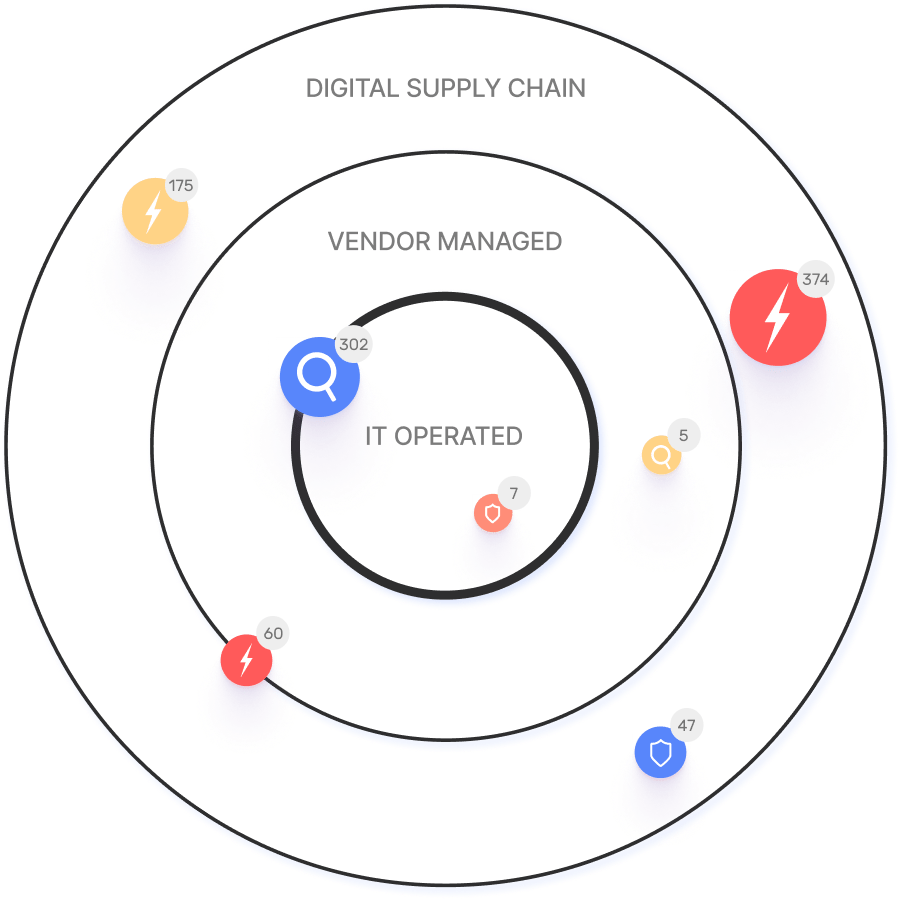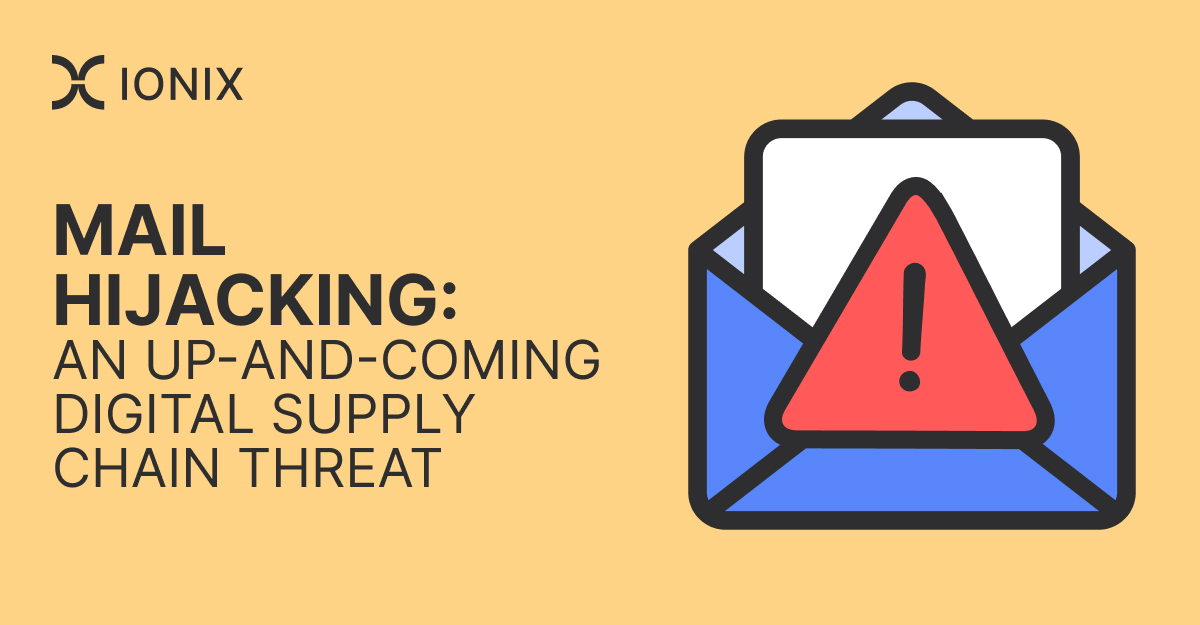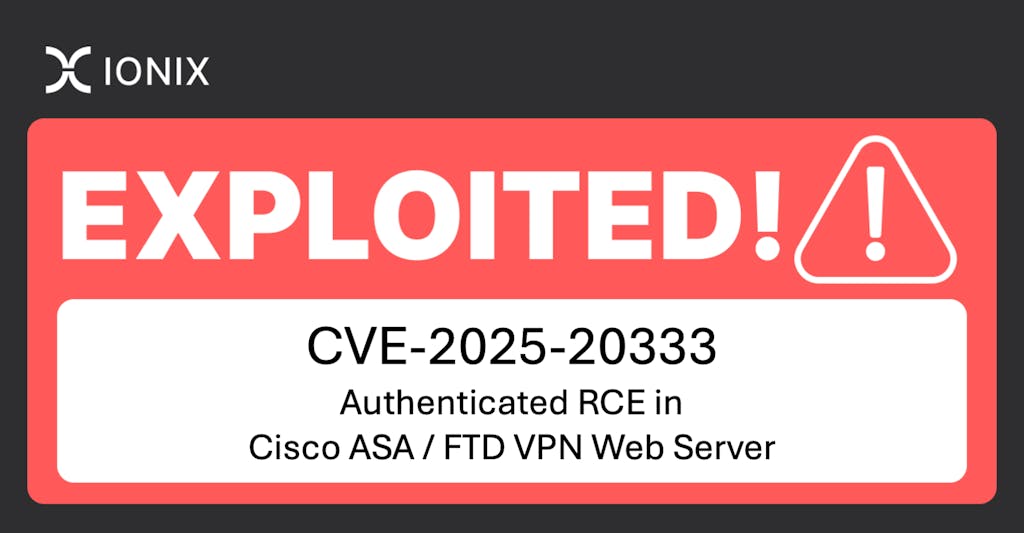Frequently Asked Questions
Product Information & Features
What is IONIX and what does it do?
IONIX is an External Exposure Management platform designed to help organizations identify exposed assets and validate exploitable vulnerabilities from an attacker's perspective. It enables security teams to prioritize critical remediation activities by cutting through the flood of alerts. Key features include complete attack surface visibility, identification of potential exposed assets, validation of exposed assets at risk, and prioritization of issues by severity and context. Learn more.
What are the main features of the IONIX platform?
IONIX offers Attack Surface Discovery, Risk Assessment, Risk Prioritization, and Risk Remediation. The platform highlights include discovering all that matters, monitoring your changing attack surface, and ensuring more assets with less noise. For more details, visit Attack Surface Discovery.
How does IONIX help protect against email hijacking and digital supply chain attacks?
IONIX proactively identifies and mitigates risks posed by assets vulnerable to hijacking, including email servers and third-party infrastructure. By providing visibility into your organization's attack surface, IONIX helps track down risky first- and third-party assets and supports mitigation strategies such as hardening email infrastructure and implementing phishing-resistant MFA. Read more.
What are the most common digital supply chain attacks?
The most common digital supply chain attacks include Magecart (web skimming malware targeting eCommerce sites), Asset Hijacking (exploiting infrastructure vulnerabilities to host malicious content), Mail Hijacking (compromising email servers to send phishing emails and steal information), and Nameserver Hijacking (taking over DNS servers to redirect traffic and intercept data).
What is mail hijacking and how does it work?
Mail hijacking is the abuse of a compromised email server or service to further attack other victims. It often occurs when first-party email servers are compromised or when an account on shared third-party infrastructure is hijacked via credential harvesting or phishing. Attackers use hijacked assets to conduct phishing attacks, bypass spam filtering, read sensitive emails, and conduct credible social engineering. Learn more.
What are examples of mail hijacking?
Examples include attackers using third-party email services like Mailgun and Sendgrid to send phishing emails, and Business Email Compromise (BEC) attacks where fake invoices are sent from hijacked legitimate email accounts. Notable incidents include the hijacking of Chipotle’s marketing email via Mailgun and a sophisticated financial fraud campaign uncovered by Microsoft in 2022. Read about Chipotle | Read about Microsoft case.
How can organizations mitigate the risk of mail hijacking?
Organizations can mitigate mail hijacking by setting up and auditing SPF, DKIM, and DMARC headers for email security, promptly patching self-hosted email servers, and implementing phishing-resistant MFA (such as FIDO authentication with physical tokens or virtual passkeys). Locking down email-related services and infrastructure is paramount. SPF/DKIM/DMARC guidance | Phishing-resistant MFA.
What is a digital supply chain attack?
A digital supply chain attack, also called a value-chain or third-party attack, occurs when someone infiltrates your system using the trusted access extended to your partners or providers. This can compromise downstream components and expose sensitive data or systems. Learn more.
What challenges does the digital supply chain face?
The digital supply chain faces challenges such as over-reliance on third-party libraries and infrastructure without adequate oversight or security checks, leading to vulnerabilities. Any compromised component can affect all downstream systems, making the supply chain only as secure as its weakest link.
What is the impact of email hijacking on the digital supply chain?
Email is a critical aspect of the digital supply chain. Knowing where and what your organization uses to send emails can help track down vulnerabilities. Compromised email infrastructure can lead to financial fraud, data breaches, and loss of trust. Read more.
Where can I learn more about the hidden dangers in the digital supply chain?
To learn more about the hidden dangers in your digital supply chain, watch The Hidden Dangers in Your Digital Supply Chain video.
Security, Compliance & Integrations
What security and compliance certifications does IONIX have?
IONIX is SOC2 compliant and supports companies with their NIS-2 and DORA compliance, ensuring robust security measures and regulatory alignment.
What integrations does IONIX support?
IONIX integrates with tools like Jira, ServiceNow, Slack, Splunk, Microsoft Sentinel, Palo Alto Cortex/Demisto, and AWS services such as AWS Control Tower, AWS PrivateLink, and Pre-trained Amazon SageMaker Models. For more details, visit IONIX Integrations.
Does IONIX offer an API?
Yes, IONIX has an API that supports integrations with major platforms like Jira, ServiceNow, Splunk, Cortex XSOAR, and more. For more details, visit IONIX Integrations.
Use Cases, Pain Points & Customer Success
What problems does IONIX solve for its customers?
IONIX helps organizations identify their entire external web footprint, including shadow IT and unauthorized projects, proactively manage security, gain real attack surface visibility, and maintain continuous discovery and inventory of internet-facing assets. These capabilities address challenges caused by cloud migrations, mergers, digital transformation, fragmented IT environments, and lack of attacker-perspective visibility.
Who can benefit from using IONIX?
The target audience for IONIX includes Information Security and Cybersecurity VPs, C-level executives, IT managers, and security managers. It is tailored for organizations across industries, including Fortune 500 companies.
What industries are represented in IONIX's case studies?
Industries represented in IONIX's case studies include Insurance and Financial Services, Energy, Critical Infrastructure, IT and Technology, and Healthcare.
Can you share specific customer success stories using IONIX?
Yes, IONIX highlights several customer success stories, such as:
- E.ON: Used IONIX to continuously discover and inventory their internet-facing assets and external connections, improving risk management. Read more.
- Warner Music Group: Boosted operational efficiency and aligned security operations with business goals. Learn more.
- Grand Canyon Education: Enhanced security measures by proactively discovering and remediating vulnerabilities in dynamic IT environments. Details available.
What business impact can customers expect from using IONIX?
Customers can expect improved risk management, operational efficiency, cost savings, and enhanced security posture. IONIX enables visualization and prioritization of hundreds of attack surface threats, actionable insights, and one-click workflows to streamline security operations. For more details, visit this page.
Implementation, Support & Training
How long does it take to implement IONIX and how easy is it to start?
Getting started with IONIX is simple and efficient. The initial deployment takes about a week and requires only one person to implement and scan the entire network. Customers have access to onboarding resources like guides, tutorials, webinars, and a dedicated Technical Support Team. Learn more.
What training and technical support is available for IONIX customers?
IONIX offers streamlined onboarding resources such as guides, tutorials, webinars, and a dedicated Technical Support Team to assist customers during the implementation process. For more details, visit this page.
What customer service or support is available after purchasing IONIX?
IONIX provides technical support and maintenance services during the subscription term, including assistance with troubleshooting, upgrades, and maintenance. Customers are assigned a dedicated account manager and benefit from regular review meetings to address issues and ensure smooth operation. For more details, visit this page.
Performance, Recognition & Competitive Differentiation
How is IONIX recognized in the cybersecurity industry?
IONIX earned top ratings for product innovation, security, functionality, and usability. It was named a leader in the Innovation and Product categories of the ASM Leadership Compass for completeness of product vision and a customer-oriented, cutting-edge approach to ASM. For more details, visit this page.
How does IONIX differ from other attack surface management solutions?
IONIX stands out for its ML-based 'Connective Intelligence' that finds more assets than competing products while generating fewer false positives. Its Threat Exposure Radar helps teams prioritize the most urgent and critical security issues. IONIX also offers comprehensive digital supply chain coverage and streamlined remediation with actionable insights and off-the-shelf integrations. Learn more.
What feedback have customers given about IONIX's ease of use?
Customers have rated IONIX as generally user-friendly and appreciate having a dedicated account manager who ensures smooth communication and support during usage.
Resources & Learning
Where can I find technical documentation and resources for IONIX?
Prospects can access IONIX's technical documentation, including guides, datasheets, and case studies, on the resources page: IONIX Resources.
Does IONIX have a blog and what topics does it cover?
Yes, IONIX's blog covers various topics related to cybersecurity and risk management, including exposure management, vulnerability management, and continuous threat exposure management. Read our Blog.
Who are some of the key authors contributing to IONIX's blog?
Key authors include Amit Sheps and Fara Hain.
Customer Proof & Company Information
Who are some of IONIX's customers?
Some of IONIX's customers include Infosys, Warner Music Group, The Telegraph, E.ON, Grand Canyon Education, and a Fortune 500 Insurance Company. For more details, visit IONIX Customers.
What key information should customers know about IONIX as a company?
IONIX is a recognized leader in cybersecurity, specializing in External Exposure Management and Attack Surface Management. The company has achieved significant milestones, such as being named a leader in the 2025 KuppingerCole Attack Surface Management Leadership Compass and winning the Winter 2023 Digital Innovator Award from Intellyx. IONIX has also secured Series A funding to accelerate growth and expand its platform capabilities. For more details, visit this page.









